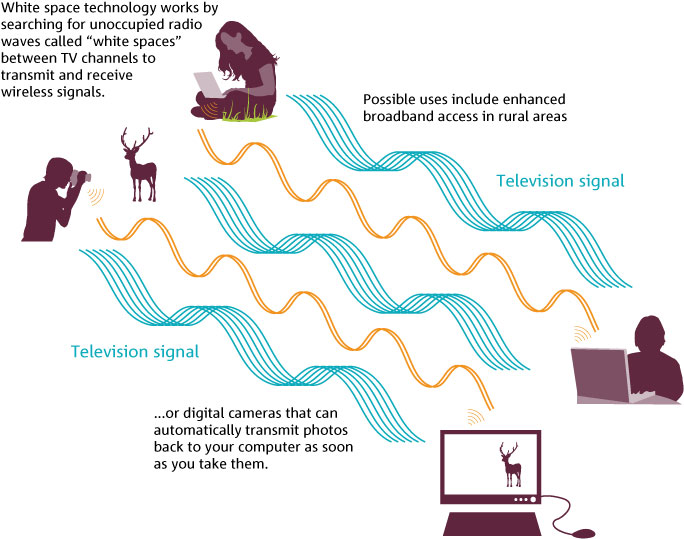British Regulator Open White Spaces
LONDON: Ofcom, the telecommunications regulator in Great Britain, cleared the way for the use of taboo TV channels, reports indicate. The agency published a “discussion document,” similar to an FCC Notice of Inquiry, to investigate broadband technologies for use in white spaces. Ofcom is following in the footsteps of the FCC in the United States, which last year opened up white spaces for use with unlicensed devices.
“Although at least three years away from commercial production, possible applications include improved mobile broadband access in rural areas; digital cameras that can automatically transmit photos back to your computer as soon as you click the shutter; and the ability to control appliances in your home--such as the oven and central heating--hundreds of miles away,” Ofcom stated.
Similar to the U.S. dictate, such devices cannot interfere with TV signals or wireless microphones, which have operated in white spaces for years. Technologies that either sniff out unused spectrum or consult a dynamic database for empty airwaves have been proffered, but their efficacy remains sketchy. Microsoft is testing spectrum-sensing technology in the Redmond, Wash., market, and a firm in Cambridge, England recently said it had developed a technology that prevents interference.
White spaces traditionally served to prevent interference to TV channels. Digital transmissions are considered less vulnerable than analog, however, so the need for buffer spectrum is now debated. American digital TV expert Charles Rhoades has demonstrated interference in his laboratory, but increasing demands for spectrum drove regulators to open the buffer zones.
Ofcom is considering the database approach to white space use: “A promising solution is for devices to do this is by consulting a ‘geolocation database’ that contains live information about which frequencies are free to use at their current location.... The purpose of this discussion document is to further the thinking that is taking place around the world on geolocation and speed the development of possible solutions.”
More on white spaces:
November 16, 2009: “U.K. Firm Says it’s Overcome White-Space Interference”
Cambridge Consultants, a U.K.-based international technology development and consultancy company, says it has developed a new low-cost cognitive radio technology that allows devices to transmit without interference over the white space frequencies.
October 22, 2009: “Virginia Town Exemplifies White Space Usage”
The community of Claudville, Va., is quintessentially “unserved,” an archetype for using TV spectrum for wireless broadband.
October, 12, 2009: “FCC Grants Microsoft White Space License”
Microsoft now has a license to use TV Chs. 7-13, 21-36 and 38-51 to conduct white space device testing in Redmond, Wash.
August 27, 2009: “Microsoft Bows WhiteFi”
Microsoft is testing a white-space system similar in nature to WiFi.
March 3, 2009: “Broadcasters Ask Court to Nix FCC White Space Order”
The two big broadcast lobbies are asking the court to stop the FCC from allowing unlicensed devices to operate in unused broadcast TV channels.
March 2, 2009: “White Space Locator Launched”
An online spectrum exchange has launched a Web site for locating white spaces. Spectrum Bridge created ShowMyWhiteSpace.com, a data base that combines mapping functions with information on occupied and open TV channels.
November 24, 2008: “White Spaces Deal is Done”
The FCC quietly made its own history Nov. 4, opening up U.S. television spectrum to mobile unlicensed devices. Such devices are intended to expand the availability of wireless broadband throughout the country, particularly rural areas.

The professional video industry's #1 source for news, trends and product and tech information. Sign up below.
